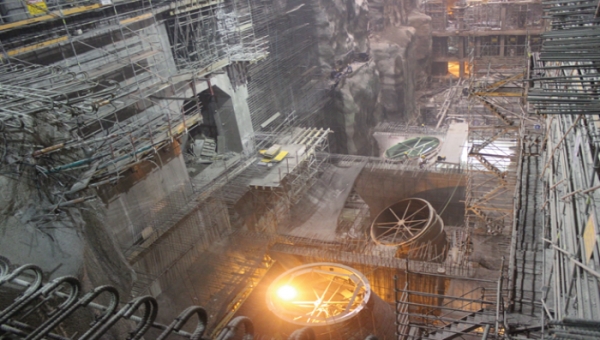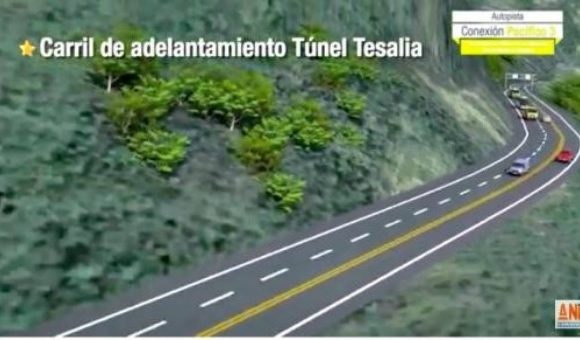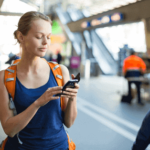Update: Controller-General Claims Hidroituango Crisis Arose From Insufficient Studies, Planning, Controls

Colombia’s Controller-General on August 25 unveiled a 442-page report finding that recent problems with the US$5 billion, 2.4-gigawatt “Hidroituango” hydroelectric project in Antioquia are the result of insufficient technical studies, planning and regulatory controls.
The Controller’s report is especially critical of Colombia’s environmental licensing agency (Agencia Nacional de Licencias Ambientales, ANLA) for issuing permits supposedly without sufficiently rigorous technical, environmental, animal and population-risk studies.
However, ANLA immediately issued a public response claiming that the Controller’s report contains “inexact” conclusions that “don’t correspond to reality.”
In part, the response points-out that ANLA wasn’t the entity that initially approved licenses for the project, but rather the Environment Ministry.
What’s more, it’s odd that the Controller didn’t raise objections to the various initial licenses and ANLA license-revisions issued in 2009, 2010, 2011, 2012, 2013, 2014, 2015, 2016 and 2017, but only after the diversion-tunnel collapse in late April 2018, ANLA points out.
In addition, ANLA emphasized that it didn’t hide anything from the Controller in ANLA’s subsequent license-revision approvals, the reponse contends.
In any case, Hidroituango project manager EPM recently hired an independent auditor that will investigate the real causes of the diversion-tunnel collapse. That auditor’s report is due by year-end 2018, ANLA added.
What’s more, EPM has undertaken every subsequent ANLA-mandated measure to remediate, fix and shore-up the project since the tunnel-collapse incident, as well as take extraordinary measures to protect and compensate affected downstream populations and wildlife, the agency adds.
Controller Report Highlights
“There are many weaknesses and errors discovered by the Controller in the different stages of the licensing process, such as the approval of the license by the then-Ministry of Environment, without sufficient studies and designs, detailed and updated, which allowed the location of the megaproject in an area with high geological risk,” according to the Controller’s report.
According to the Controller’s report, the Hidroituango project “is located in an area crossed by more than 11 recognized geological faults,” while some 26,000 people living in the area of the hydroelectric dam potentially could suffer disastrous consequences from any dam failure.
An “alternative environmental study” potentially could have led EPM to reconsider whether the chosen Hidroituango site “was the best option from the environmental and social point of view,” according to the report.
“Due to the absence of certain studies and real designs, 12 modifications to the environmental license had to be generated throughout the execution of the project, which also did not have sufficient and detailed studies and designs, and ANLA — without sufficient bases in some cases — has granted them,” according to the report.
“In the development of the civil works of the project, there were decisions by the licensee and the environmental authority which were not supported in a technical manner, which generated flaws in the project, such as the final closure of the two main [Cauce River water] diversion tunnels, without having built the floodgates included in the design; and in their replacement the construction of a single [evacuation] tunnel with half the capacity of the two closed tunnels, also located on geological faults,” according to the Controller’s report.
What’s more, since EPM’s recently contracted study investigating the cause of the tunnel collapse still hasn’t been completed, it remains possible that some future collapse could occur in the rock massif adjacent to the dam, with potentially catastrophic consequences, according to the Controller.
“The risk can be increased by the arrival of the rainy season in October, when [rainfall] reaches the maximum peak,” according to the report.
“Given the technical uncertainty surrounding the project in terms of its future, the most certain and real thing is that due to its location, the features of the Cauca River, the deficiencies in studies and designs, the [uncertain] civil works developed, the inhabitants that have been affected and the damages caused to natural resources (flora and fauna), the horizon of the project can be considered as uncertain and the systemic risk is permanent,” according to the Controller.
“Due to the [tunnel-collapse] contingency that occurred in April and May of 2018, the current post-emergency conditions and the internal stability of the massif are not the same as those with which the environmental license was [initially] granted.
“As the excavations of the [construction] work and the actions generated by the loss of hydraulic control of the dam possibly weakened the massif, generating structural changes, [these factors] must be evaluated to continue the project.
“Especially the [water volume behind the dam, adjacent to the rock massif] drastically affects the seismicity, induced by the increase of the load due to the weight of the water, the increase of pore pressure in the geological faults and the lubrication of the contact surfaces,” according to the report.
The uncertain integrity and stability of the right bank massif, where all the main works of the hydroelectric] plant are located, plus the impact of the temporary diversion of Cauca River water through mechanical room, both raise the possibility that “this massif should never have been saturated and under pressure,” the report concludes.
EPM Statement
On August 27, EPM released the following statement in reaction to the Controller’s report:
“In relation to the findings of the audit report on the compliance of the environmental authorities in the licensing process for the Ituango hydroelectric project, prepared by the Controller-General of the Republic, EPM informs the following:
“1. From the beginning of the [Hidroituango tunnel-collapse] contingency, EPM has expressed its interest in clarifying all doubts that may be held about the work. Therefore, as is our duty and will, we have provided the authorities and the control agencies with the information required to carry out the revisions on the management and execution of the project.
“2. The construction and development process of the Hidroituango hydroelectric project has always been accompanied by the competent [regulatory] authorities.
“3. Several aspects related to the findings announced by the Controller-General’s Office have been in the process of investigation for several weeks by the Corporate Audit and Disciplinary Control [office] of EPM. EPM respects due process, for which reason it refrains from elaborating upon the facts of the investigations that are in progress. Once the results of the inquiry are known, our conclusions will be divulged in a timely manner.”
















